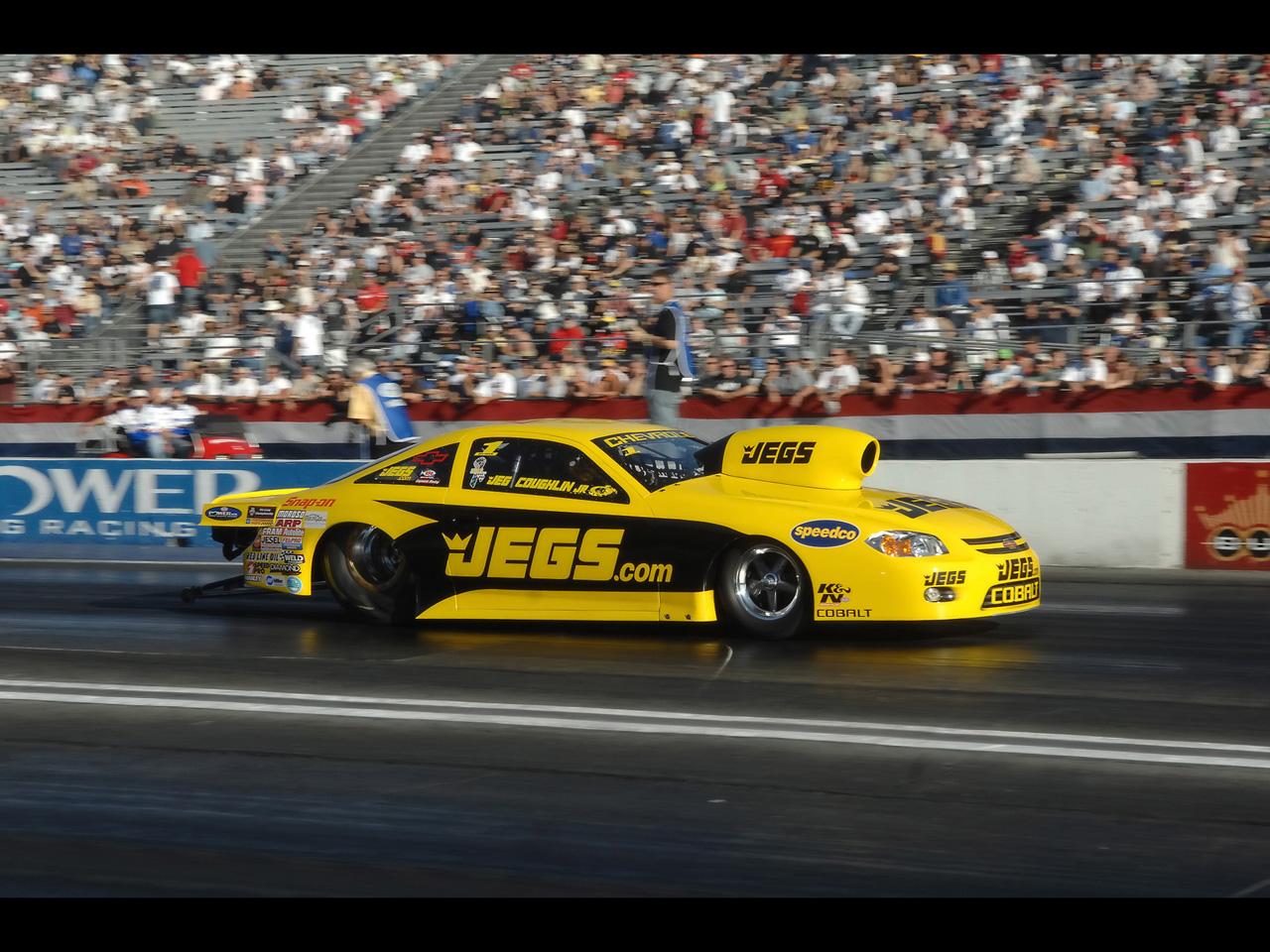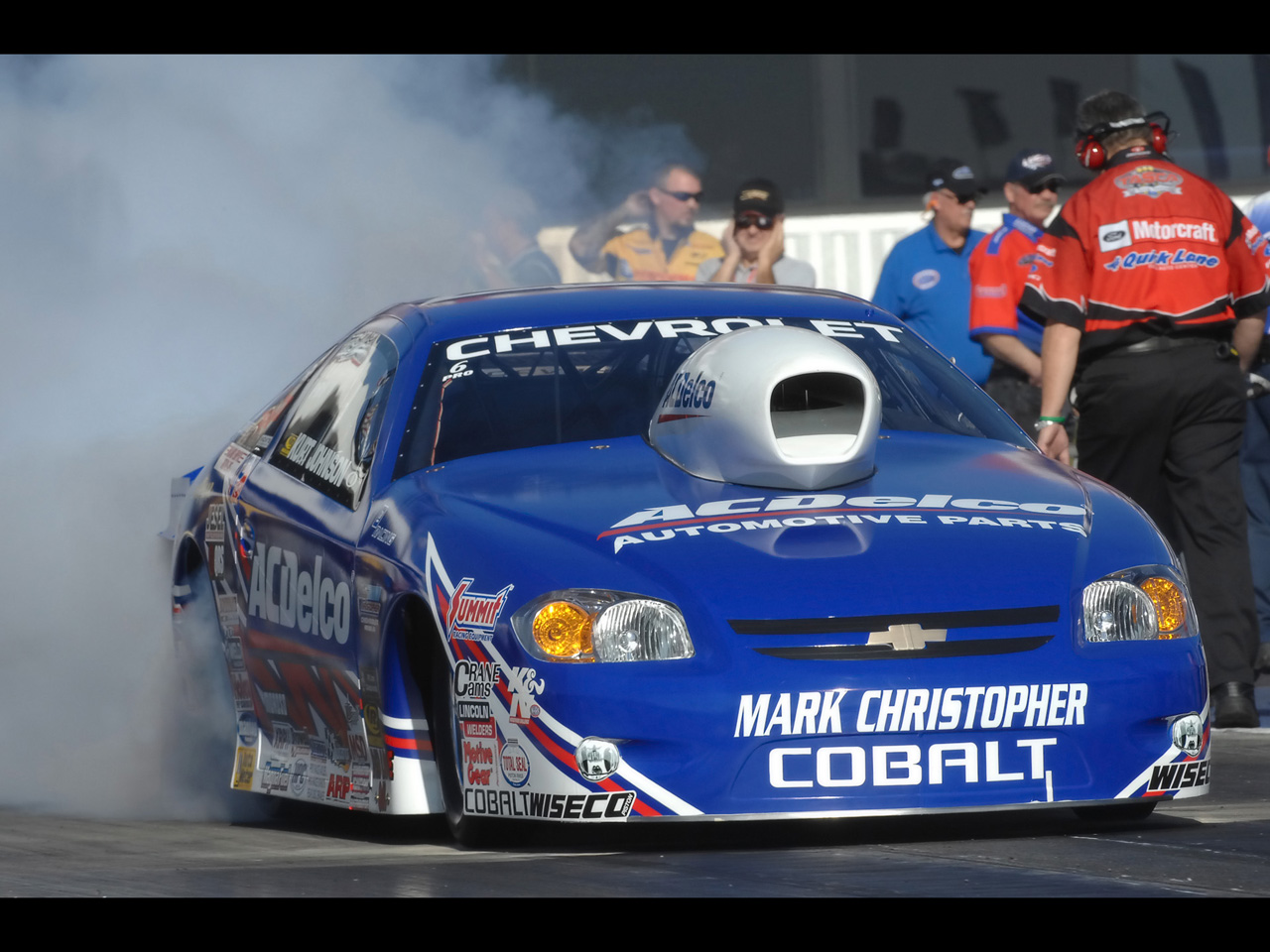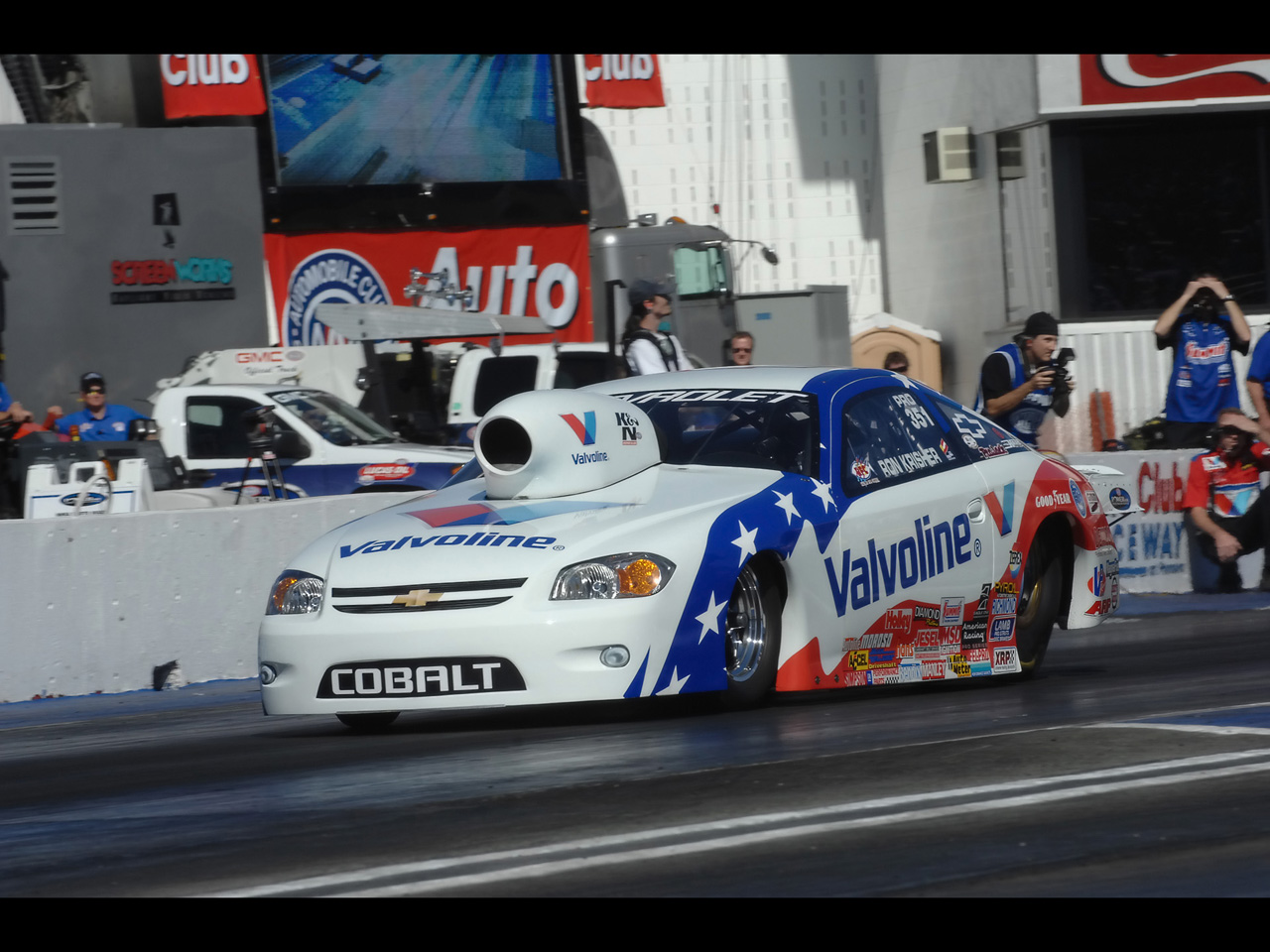2008 Chevrolet Cobalt NHRA Pro Stock
|
Price |
-- |
Production |
-- | ||
|
Engine |
-- |
Weight |
-- | ||
|
Aspiration |
-- |
Torque |
-- | ||
|
HP |
-- |
HP/Weight |
-- | ||
|
HP/Liter |
-- |
1/4 mile |
-- | ||
|
0-62 mph |
-- |
Top Speed |
-- |
(from General Motors
Press Release) Chevy Cobalt Continues Chevy's Winning
Tradition in Pro Stock
Chevrolet's ongoing American Revolution came to NHRA Pro Stock with
the introduction of the Chevy Cobalt at Bristol Dragway on April 29,
2005. It didn't take long for the new Chevy to earn a place in the
NHRA record book. On June 18, 2005, Kurt Johnson qualified his
ACDelco Cobalt in the No. 1 spot at the K&N Filters Super Nationals
in Englishtown, N.J. One week later, Johnson put his Cobalt in the
winner's circle at the Sears Craftsman NHRA Nationals in Madison,
Ill. In 2007, Chevy Cobalt drivers combined for seven victories in
12 final-round appearances, with Dave Connolly finishing third in
the final Pro Stock standings and Johnson finishing fifth.
"Chevrolet's performance heritage promises cars that are dependable,
capable and exciting to drive," said Ed Peper, Chevrolet general
manager. "The Chevy Cobalt puts the fun back into driving by
delivering an experience never before seen in the compact-car
segment. Chevrolet races to win: Chevy has a strong heritage in drag
racing and is one of America's most successful automotive brands.
The NHRA Pro Stock Cobalt is designed, built and engineered to
continue that winning tradition."
Work on the Pro Stock Cobalt started in November 2003 when GM Racing
engineers began exploring concepts for a new Chevy Pro Stock race
car. They took a pre-production model of the new Cobalt to Don Ness
Racecraft, near Minneapolis, and, along with Ness and
representatives from the NHRA – including National Technical
Director Danny Gracia – the group began reviewing the styling
features of the new car.
During this initial design phase, NHRA officials mandated more than
20 minimum dimensions for the construction of Pro Stock cars,
including the new Cobalt. The new specifications covered such areas
as the height and width of the car, the front and rear overhangs and
other critical dimensions.
"The first thing we had to do was make sure the new Pro Stock Cobalt
fit within the box," explained Dan Engel, GM Racing program manager
for NHRA drag racing. "NHRA specified several key minimum
dimensions, so the goal was to meet them without changing the basic
body shape. NHRA was involved in the process from the very start,
and like everyone at GM, it was interested in retaining the body
lines and contours of the production Cobalt. Chevy is selling and
racing Cobalts, so we want the race cars to look like Cobalts."
The production version of the Cobalt provided a solid foundation for
GM Racing engineers to begin the planning and construction of the
Pro Stock version. Extensive research was conducted in the GM wind
tunnel in Warren, Mich., evaluating various greenhouse shapes,
decks, roofs and fender flares to determine the most aerodynamically
efficient design.
"The Cobalt was a great car to start with," explained Engel.
"Obviously, it's a lot easier to start with a smaller car than a big
car, but the biggest hurdle we had was making enough room under the
hood to get that 500-ci DRCE engine in there. We were able to get
the body to meet all the dimensions mandated by NHRA, fit the
engine, the rear axle, the entire chassis, and still retain the
shapes and contours of the production Cobalt."
GM Racing engineers had two objectives for the Cobalt program: The
first was to create a one-piece body, or unibody, that would make it
more efficient for chassis builders to mount and work with, and for
the NHRA Technical Department to inspect. The second was to reduce
the weight of the body while maintaining its stiffness, strength and
structural integrity.
"Whenever we create a new race car, we try to accomplish more than
just introducing a new model," Engel said. "We also want to apply
everything we've learned since building the older design so that we
can keep moving forward, whether it's in the area of aerodynamics,
strength of the body, safety, etc. These were two areas where we
felt we could make improvements."
The Cobalt's predecessor was the Chevy Cavalier. The Pro Stock
Cavalier featured a one-piece nose, hood, quarter panels and front
valance. However, the rear end of the Cavalier race car comprised
many different components, including right and left quarter panels,
the roof, rear deck, rear deck filler panel and bumper cover.
Chassis builders had to align these various components correctly to
make a perfect fit for the template. NHRA officials were in favor of
the new unibody construction because it would make it easier to
check the car when it's going through tech inspection at the race
track.
"We had great input from the people at NHRA throughout the entire
project," Engel noted. "They were even at the second wind tunnel
test when we made some minor changes to the car, and we provided
them with all the aero numbers. They've been tremendous to work
with."
After the second wind tunnel test, Five Star began the process of
creating the molds that were used to make the actual body panels.
But before it could make the molds, it had to complete a lot of prep
and finish work to ensure the body was perfectly smooth and
symmetrical.
After the molds were completed, Five Star created a Cobalt body that
was sent back to Ness Racecraft, where it was mounted on a chassis.
NHRA inspectors again went through the process of checking
dimensions, and at this point the templates were made.
"We built the first set of production templates at Don Ness' shop,"
said Engel. "We gave them to NHRA and they become their master set.
Besides measuring the car, NHRA also checked out the templates to
make sure they fit the car. Because these are the templates GM has
built under the supervision of NHRA, these will be the templates now
used at the race track."
Chevrolet drag racers liked what they saw when the new Cobalt body
was introduced.
"It's a great looking car," said Johnson, driver of the ACDelco
Cobalt. "It's sleek, narrow and better in the wind tunnel than the
previous car. It's always positive any time a racer gets the
improvements of a new race car, and the new Cobalt is definitely a
great package."



